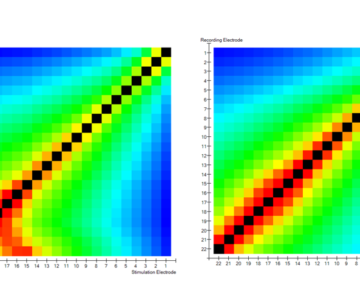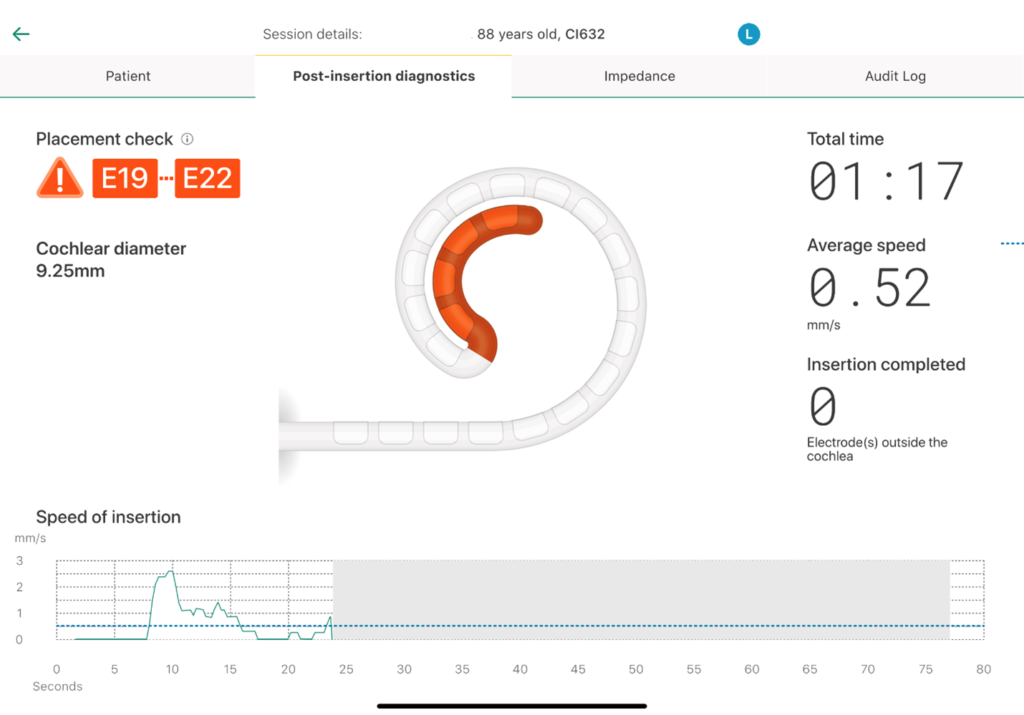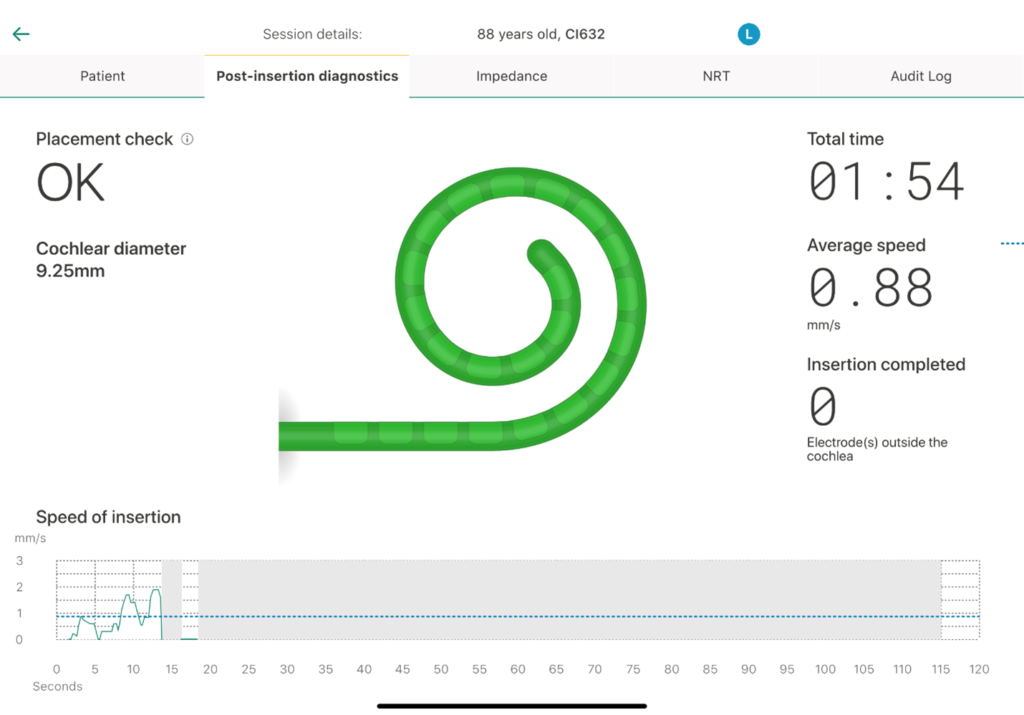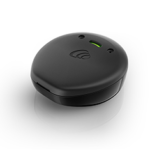By Wade Colburn, Biomedical Engineer and Product Manager – Implants, Cochlear Americas
Slim, Modiolar Cochlear Implant Electrode: Melbourne Experience and Comparison With the Contour Perimodiolar Electrode1
Chanan Shaul, Stefan Weder, Sylvia Tari, Jean-Marc Gerard, Stephen J. O’Leary, and Robert J. Briggs
Otol Neurotol. 2020;41(5):639-643
In today’s busy clinical environment, clinicians who value research-based practice often struggle to keep up with current literature. To help, we offer a Cochlear ProNews feature where rotating guest authors present a current journal article summary.
The latest Journal Club explores a recent study from The Royal Victorian Eye and Ear Hospital, Slim, Modiolar Cochlear Implant Electrode: Melbourne Experience and Comparison With the Contour Perimodiolar Electrode. This article highlights the center’s experience with Slim Modiolar and compares this to experiences with Contour Advance®.
What did the study investigate?
Goals of the study:
- Describe the tip fold-over rate, scalar localization and speech perception outcomes of the Slim Modiolar Electrode
- Compare Slim Modiolar performance and scalar localization to a retrospective matched group experiences of Contour Advance patients
Why is this important?
Electrode variations, such as lateral wall and perimodiolar electrodes, are often a topic of conversation in the cochlear implant industry. As this article states, there is evidence suggesting perimodiolar electrodes have lower electrical stimulation thresholds, demonstrate less spread of excitation and demonstrate a more focused stimulation, resulting in optimal speech performance.1
Despite these benefits, there is a belief that perimodiolar electrodes are more prone to translocate, and thus cause more damage to the structure of the cochlea. This study looks at the results of Slim Modiolar, Cochlear’s latest perimodiolar offering, and compares it to the historical results of the Contour Advance electrode. This article represents a larger case study with Slim Modiolar, demonstrating the optimized design regarding the placement of the electrode close to the modiolus and within scala tympani.
How did they do it?
Here is the need-to-know:
- Conducted prospective observational study with retrospective comparative analysis
- Contained 125 Slim Modiolar adult recipients and 69 Slim Modiolar pediatric recipients
- Compared to retrospective review of Contour Advance patients, which were previously reported in a 2018 article by the same research group2
- Collected demographic data on all adult patients
- Repeated speech perception testing three and 12 months postoperatively using Consonant Vowel Consonant (CVC) evaluation
- Matched comparator of performance with no significant differences regarding age, duration of deafness and preoperative phoneme scores
- Reported extended round window cochleostomy in all Slim Modiolar patients
Results1
The paper reported that eight adult patients had a tip fold-over (4.1%). Six cases were revealed with an intraoperative x-ray and five were corrected in the OR. Cone Beam CT (CBCT) scans were performed in 120 of 125 patients with 119 (99.1%) cases showing complete scala tympani insertion and one patient with a complete scala vestibuli insertion.
Slim Modiolar results were compared to a series of patients previously reported with Contour Advance, showing 58 of 79 patients (73%) with scala tympani location.2 Of the 120 patients with CBCT, 98 had postlingual deafness and were evaluated at three months. 95 patients had scores at 12 months.
No significant differences were found in recipients that had a tip fold-over compared to those with single insertions. Slim Modiolar patients had an average three month post-operative phoneme of 64.2, as compared to 71.6 at 12 months post-op.
Table 2 below highlights the comparison between matched groups, which were matched with no significant differences regarding age, duration of deafness and preoperative phoneme scores.

This study highlighted a significant difference between Contour Advance and Slim Modiolar electrodes, which could be due to scalar localization. However, there is an opportunity to compare to a more controlled group. Nonetheless, the article highlights multiple articles that have reported on the Slim Modiolar electrode and the associated results. Ultimately the study concludes, “Slim Modiolar electrode provides reliable scala tympani position” with a relatively low tip fold-over rate.
Results of this study indicate that there are many advantages to a perimodiolar array, specifically Slim Modiolar, including closer proximity to the modiolus and decreased translocation rates. There continues to be a growing body of evidence surrounding Slim Modiolar.
Learn more about perimodiolar electrodes by accessing the publication and stay tuned for the next edition of Journal Club!

About our guest author: Wade Colburn is the Product Manager, Cochlear Implants at Cochlear Americas. Wade is responsible for managing the lifecycle of products, including managing supporting current products and bringing new ones to the market. Wade is a biomedical engineer from North Carolina State University with extensive experience within otolaryngology prior to joining Cochlear.
References:
- Shaul C, Weder S, Tari S, Gerard JM, O’Leary SJ, Briggs RJ. Slim, Modiolar Cochlear Implant Electrode: Melbourne Experience and Comparison With the Contour Perimodiolar Electrode. Otol Neurotol. 2020;41(5):639-643. doi:10.1097/MAO.0000000000002617
- Shaul C, Dragovic AS, Stringer AK, O’Leary SJ, Briggs RJ. Scalar localisation of peri-modiolar electrodes and speech perception outcomes. J Laryngol Otol 2018;1–7. https://doi.org/10.1017/S0022215118001871
















